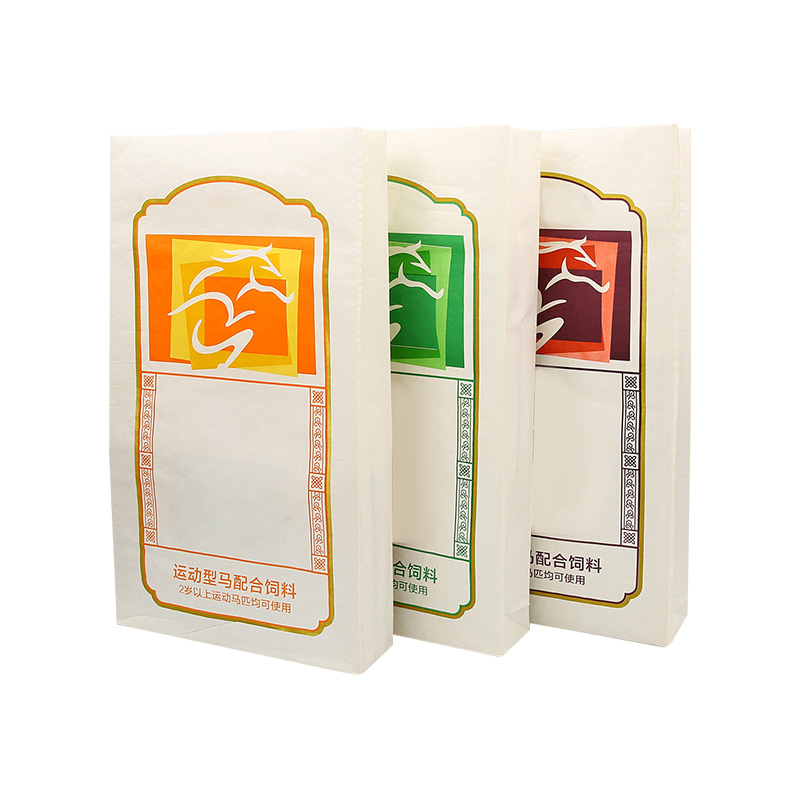Paper-plastic composite bags combine the strength and flexibility of plastic with the sustainability of paper and are widely used in food, industrial, and consumer goods. As global demand for multifunctional and environmentally friendly packaging continues to grow, understanding the trends and opportunities in this market is crucial.
Paper-plastic composite bags are widely used in industries that require strong, tear-resistant packaging that can also offer moisture protection. Their construction allows them to maintain structural integrity during transportation and storage, reducing the risk of product damage. One notable area of growth is in packaging for paper products. Manufacturers and distributors increasingly rely on these composite bags to safely transport items such as notebooks, stationery, and printed materials. The composite nature ensures that the packaging can withstand external pressures while maintaining a clean, professional appearance.
In addition to industrial applications, the food packaging sector is embracing paper-plastic composite solutions. Kraft paper packaging for food has emerged as a popular choice due to its ability to provide both protection and an eco-friendly image. The combination of paper and plastic allows food items to remain fresh and secure, while also meeting evolving sustainability expectations. Many companies are exploring the use of kraft paper layers for branding purposes, using the natural texture to convey quality and responsibility. This trend is especially relevant for bakery items, snacks, grains, and other dry food products.

Another dimension of the market is the increasing adoption of reusable woven bags. These bags, often made from polypropylene or similar materials, provide a sustainable alternative for shopping, bulk transport, and storage. While they are not strictly composite bags, they often complement the paper-plastic packaging ecosystem by reducing the reliance on single-use packaging solutions. Reusable woven bags are durable, easy to clean, and can support substantial weight, making them suitable for both consumer and industrial applications. Many retailers and suppliers are integrating reusable woven bags alongside composite options to provide a full range of packaging solutions.
From a technological perspective, manufacturing innovations have improved the efficiency and performance of paper-plastic composite bags. Laminating techniques, high-quality adhesives, and precision printing have expanded the range of applications. For example, barrier layers can be added to enhance moisture resistance, while surface coatings allow for high-resolution graphics without compromising recyclability. Such advancements enable packaging designers to tailor bags for specific products, whether it involves powdered chemicals, food items, or paper products.
Sustainability continues to influence purchasing decisions and market growth. Consumers are increasingly aware of the environmental impact of packaging, encouraging businesses to adopt materials that can be recycled or repurposed. The hybrid structure of paper-plastic composite bags allows for partial recyclability while maintaining the functional benefits of both components. In parallel, reusable woven bags contribute to a reduction in single-use plastics, reinforcing the market's shift toward more environmentally conscious solutions.
The global supply chain is also affecting the adoption of composite bags. Efficient logistics and reliable packaging are critical in sectors such as food distribution and industrial material transport. Paper-plastic composite bags, together with reusable woven bags, provide solutions that meet both operational and regulatory requirements. Additionally, kraft paper packaging for food continues to gain attention due to its natural appearance and ability to meet international food safety standards. These attributes make it a practical choice for both domestic and export markets.
As industries evaluate packaging strategies, understanding market insights for paper-plastic composite bags becomes essential. Factors such as material costs, regulatory requirements, technological advancements, and consumer preferences all contribute to market dynamics. Companies that integrate multiple types of packaging—such as composite bags, kraft paper options, and reusable woven bags—can better address diverse customer needs while contributing to sustainable practices. Over time, the combination of durability, versatility, and environmental responsibility is likely to sustain interest in these packaging solutions.
Paper-plastic composite bags offer a balance between performance and sustainability, making them relevant for food, industrial, and consumer packaging. The use of kraft paper packaging for food and packaging for paper products highlights the versatility of these materials, while reusable woven bags complement these solutions by providing durability and reusability. Industry stakeholders can benefit from closely monitoring market trends, technological developments, and regulatory requirements to optimize their packaging strategies in line with current demands.


 English
English Español
Español عربى
عربى
